
Competitor analysis is essential for businesses to benchmark their market position, understand rival strategies, and uncover new growth opportunities. While traditional competitor analysis focuses on market share, pricing, and financials, today’s businesses—especially in technology-driven industries—require deeper insights into patent portfolios, R&D activities, and innovation trends. This article explores how to conduct a comprehensive competitor analysis, the challenges businesses face, and how AI agent PatSnap Eureka enhances the process with real-world examples like Tesla, Inc.
What Is Competitor Analysis
Competitor analysis is the process of gathering and evaluating data about industry rivals to make better strategic decisions. It helps businesses:
- Identify market trends and anticipate industry shifts
- Monitor competitor R&D activities and technology advancements
- Analyze competitor patent portfolios to avoid legal risks
- Track investments, mergers, and acquisitions (M&A) to identify market opportunities
What is competitor analysis, and how can PatSnap Eureka help? PatSnap Eureka provides advanced tools to analyze market trends, track competitor innovations, and uncover strategic insights, helping businesses stay ahead by making data-driven decisions.
Traditional vs. Modern Competitor Analysis
| Traditional Competitor Analysis | Modern Competitor Analysis |
|---|---|
| Focuses on market share, revenue, and product pricing | Tracks R&D, patents, and scientific research trends |
| Based on financial reports and customer feedback | Uses AI-driven patent analytics and funding insights |
| Time-consuming manual research | Automated real-time competitor tracking |
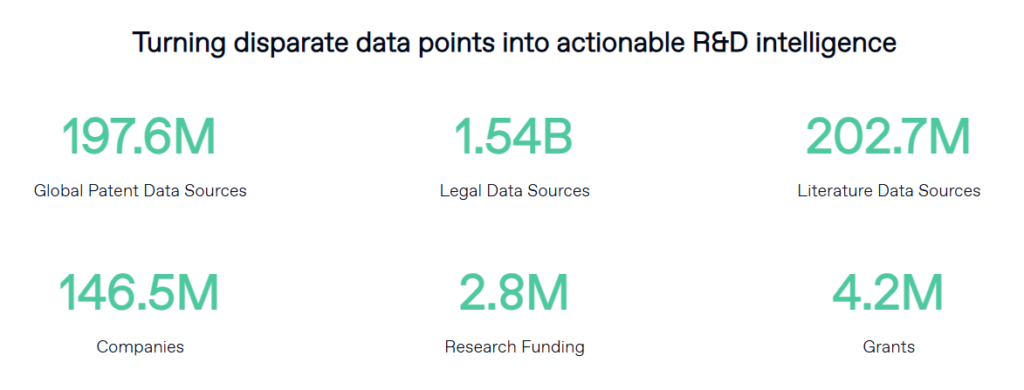
How to Conduct Competitor Analysis (Step-by-Step)

Step 1: Identify Key Competitors & Market Positioning
To conduct an effective competitor analysis, businesses must first identify direct and indirect competitors and evaluate their market positioning. This involves understanding who the key players are, their technological strengths, and their competitive advantages.
Key Actions:
- Identify market leaders, emerging players, and disruptive startups.
- Benchmark competitors based on patents, R&D investment, and innovation strength.
- Map the competitive landscape to understand market gaps and trends.
How PatSnap Eureka Helps (HEV Example):
📌 AI-Powered Competitor Mapping – Eureka automatically identifies key hybrid electric vehicle (HEV) manufacturers, such as Toyota, Honda, Ford, and Hyundai, based on their patent activity and R&D investments.
📌 Market Trend Visualization – Tracks the growth of HEV adoption, highlighting the influence of government incentives and emissions regulations in key markets like Europe, North America, and China.
📌 Competitive Benchmarking – Compares Toyota’s hybrid powertrain patents with Hyundai’s advancements in plug-in hybrid systems, offering insight into future industry trends.
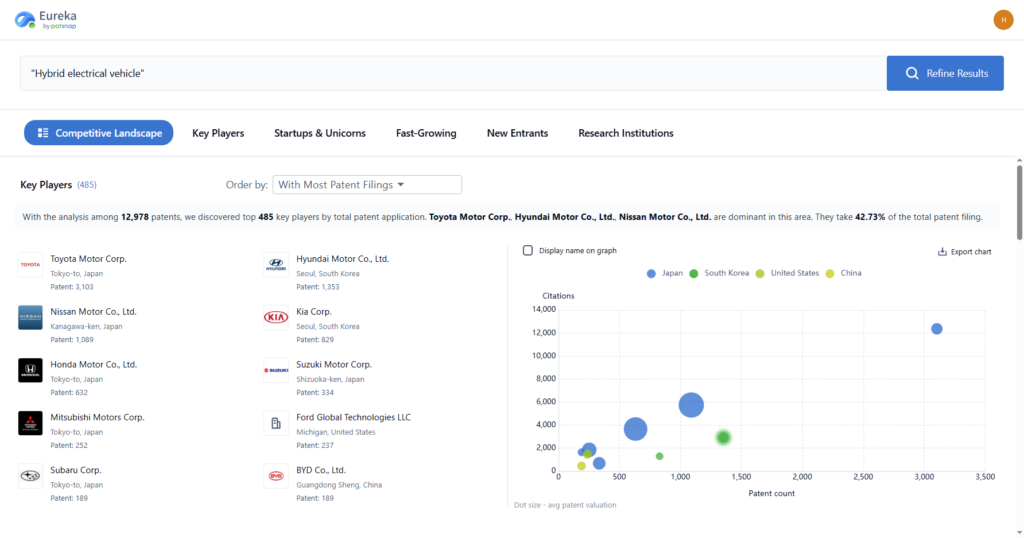
Step 2: Analyze Competitor R&D and Patent Strength
A deep competitor analysis requires assessing technological capabilities, intellectual property (IP) assets, and research breakthroughs to identify innovation trends and potential disruptions.
Key Actions:
- Track competitor patent filings, licensing agreements, and R&D activities.
- Identify emerging innovation trends in AI, EV batteries, semiconductors, and other industries.
- Benchmark patent portfolio strength and research impact against industry leaders.
How PatSnap Eureka Helps (HEV Example):
📌 Patent Trend Analysis – Tracks Toyota’s dominance in hybrid powertrain innovation, including variable valve timing systems and next-gen regenerative braking technologies.
📌 Scientific Research Monitoring – Identifies university and industry research on solid-state batteries, predicting how these advancements will impact HEV efficiency.
📌 Technology Strength Index – Benchmarks Honda’s hybrid drivetrain patents against Ford’s focus on battery thermal management, revealing innovation gaps.
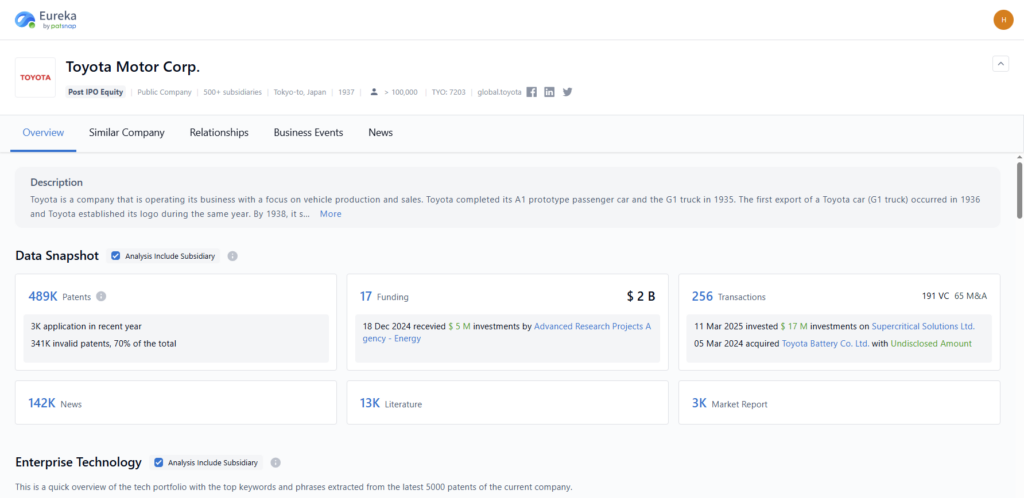
Step 3: Monitor Competitor Investments & M&A Strategies
Understanding competitor financial moves, including funding rounds, acquisitions, and partnerships, provides critical insights into future business strategies and industry trends.
Key Actions:
- Track venture capital funding, acquisitions, and joint ventures in the industry.
- Identify high-growth startups and potential market disruptors.
- Analyze capital allocation trends to predict future competitor moves.
How PatSnap Eureka Helps (HEV Example):
📌 Investment & Funding Insights – Detects Hyundai’s multi-billion-dollar investments in hybrid battery technology, alongside Ford’s acquisition of solid-state battery startups.
📌 Startup Intelligence – Identifies emerging companies developing next-generation hybrid battery chemistries, such as lithium-silicon anodes and fast-charging solutions.
📌 M&A Tracking – Maps Toyota’s collaboration with Panasonic to develop higher energy-density hybrid batteries, providing insights into potential supply chain disruptions.
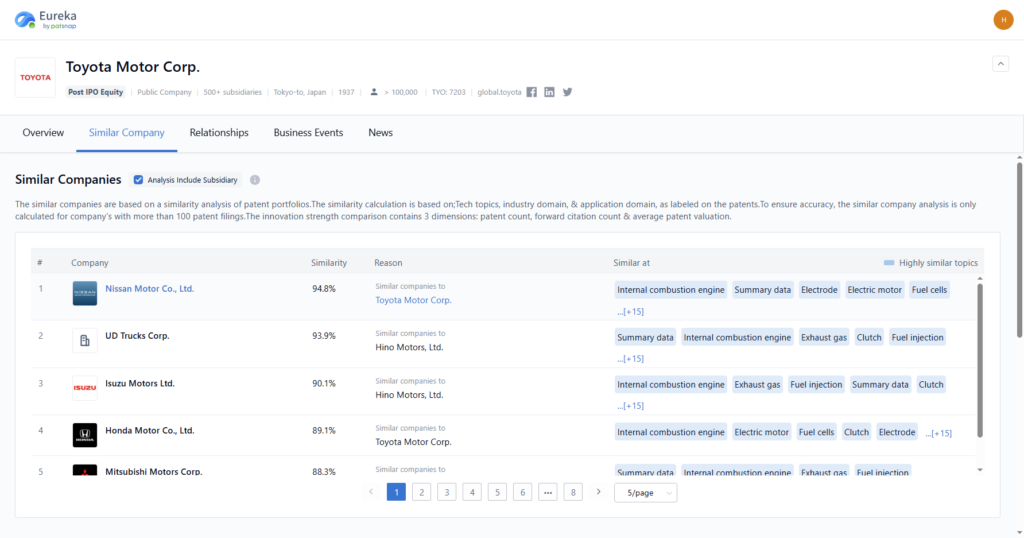
Step 4: Evaluate Competitive Risks & Legal Challenges
Analyzing legal risks, patent disputes, and regulatory challenges is crucial to mitigating risks and safeguarding innovation.
Key Actions:
✔ Monitor ongoing patent disputes and IP litigation cases.
✔ Assess potential risks from regulatory changes or government policies.
✔ Identify licensing and partnership opportunities to avoid IP conflicts.
How PatSnap Eureka Helps:
📌 Patent Dispute Alerts – Tracks ongoing and past legal battles involving IP and patent rights.
📌 Regulatory Monitoring – Analyzes compliance trends and government policies affecting industry growth.
📌 IP Risk Mitigation Reports – Provides legal risk assessments and strategic patent defense recommendations.
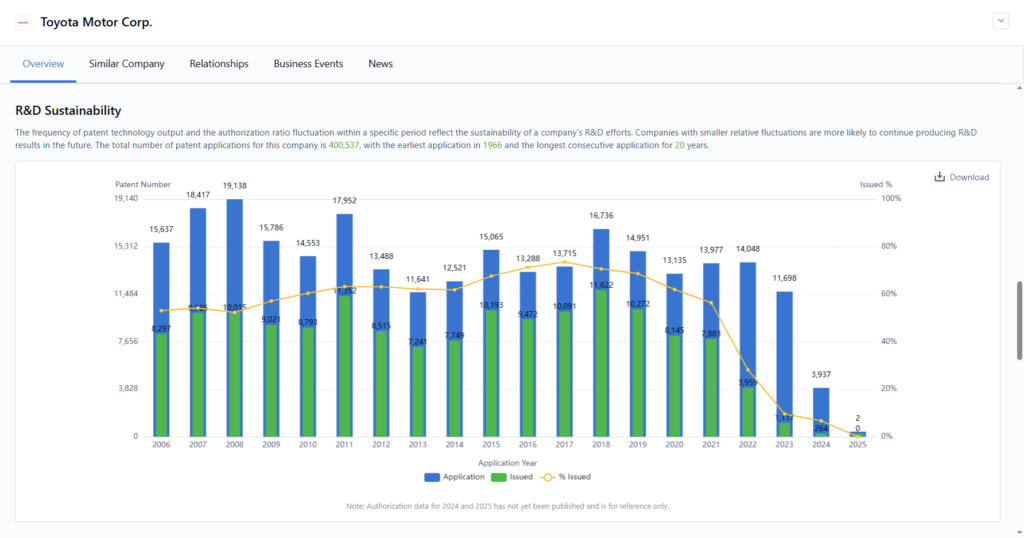
Step 5: Generate a Competitor Analysis Report & Strategic Recommendations
The final step is compiling findings into a structured competitor analysis report, providing actionable insights for business decisions.
Key Actions:
- Summarize competitive landscape insights, R&D trends, and investment data.
- Provide strategic recommendations for product development, market entry, or M&A decisions.
- Deliver forecasting reports to predict future technology and industry trends.
How PatSnap Eureka Helps:
📌 Automated CI Report Generation – Compiles real-time insights into a structured competitor analysis report.
📌 AI-Driven Forecasting – Uses predictive analytics to forecast future technology disruptions and market trends.
📌 Customizable Business Strategy Dashboards – Provides interactive, real-time dashboards for ongoing competitor tracking.
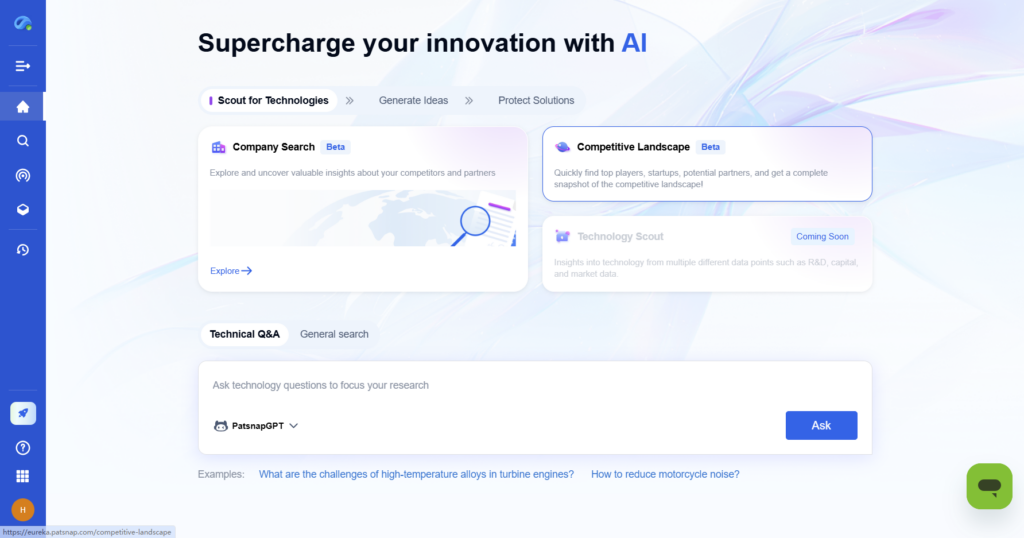
Why PatSnap Eureka Is the Best AI Agent for Competitor Analysis
Unlike traditional competitor intelligence tools, PatSnap Eureka provides an AI-driven approach that integrates:
- Real-time R&D intelligence – Tracks scientific publications, patents, and disruptive innovations.
- AI-powered competitor intelligence – Goes beyond financial reports to analyze technology breakthroughs and research trends.
- Automated competitor analysis reports – Uses AI to generate real-time insights.
- IP & patent risk tracking – Helps prevent infringement lawsuits and identify licensing opportunities.
Who Should Use PatSnap Eureka?
✔ R&D Teams & Engineers: Stay ahead of emerging technology trends.
✔ Tech Investors & Analysts: Identify high-growth investment opportunities.
✔ Corporate Strategy Teams: Make data-driven M&A and innovation decisions.
PatSnap Eureka is the ultimate AI agent for competitor analysis in technology-driven industries. Stay ahead today!
Conclusion
Traditional competitor analysis focuses on market trends, pricing strategies, and financial reports, missing deep insights into R&D and technological innovation. PatSnap Eureka, as an AI agent for technical innovation, transforms competitor analysis by providing real-time intelligence on patents, scientific research, and disruptive technologies.
Want to dominate your industry? Use PatSnap Eureka for AI-powered competitor analysis today!


